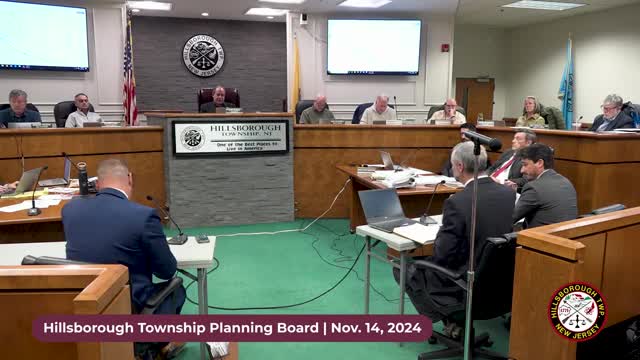Soil Testing Controversy Unfolds in High-Stakes Hearing
November 14, 2024 | Hillsborough, Somerset County, New Jersey
This article was created by AI summarizing key points discussed. AI makes mistakes, so for full details and context, please refer to the video of the full meeting. Please report any errors so we can fix them. Report an error »

In a recent government meeting, discussions centered around soil testing methodologies and classifications, particularly focusing on the reliability of NRCS (Natural Resources Conservation Service) mapping and its implications for local environmental management.
A key point of contention arose regarding the reliability of NRCS soil mapping. One participant expressed confidence in the mapping's reliability, citing its frequent use in assessments. However, the discussion highlighted that while NRCS maps provide a general overview, they are not precise and should be interpreted with caution. The mapping process involves digging test pits, analyzing soil samples, and interpreting aerial photographs, but the resulting classifications can vary significantly based on local conditions.
The meeting also addressed the criteria for classifying soils according to the BMP (Best Management Practices) manual. It was confirmed that the manual includes guidelines for determining soil classifications based on the depth to seasonal high groundwater. However, the specifics of these classifications were debated, particularly regarding the definitions of HSGD (Hydrologic Soil Group D) and the implications for water management practices.
Participants discussed the number of soil tests conducted on a specific property, with one expert noting that 96 tests had been performed. While some members agreed with the reclassification of the soil based on these tests, others raised concerns about the adequacy of the testing and the potential for discrepancies in soil classifications across the site.
The conversation underscored the importance of visual inspections in soil analysis, emphasizing that factors such as color and texture are critical in determining soil characteristics. Despite the complexities involved, experts maintained that sound engineering assumptions must guide decisions when discrepancies arise in soil testing results.
Overall, the meeting revealed a nuanced debate over soil classification methodologies and their implications for environmental management, highlighting the need for careful interpretation of soil data in planning and development processes.
A key point of contention arose regarding the reliability of NRCS soil mapping. One participant expressed confidence in the mapping's reliability, citing its frequent use in assessments. However, the discussion highlighted that while NRCS maps provide a general overview, they are not precise and should be interpreted with caution. The mapping process involves digging test pits, analyzing soil samples, and interpreting aerial photographs, but the resulting classifications can vary significantly based on local conditions.
The meeting also addressed the criteria for classifying soils according to the BMP (Best Management Practices) manual. It was confirmed that the manual includes guidelines for determining soil classifications based on the depth to seasonal high groundwater. However, the specifics of these classifications were debated, particularly regarding the definitions of HSGD (Hydrologic Soil Group D) and the implications for water management practices.
Participants discussed the number of soil tests conducted on a specific property, with one expert noting that 96 tests had been performed. While some members agreed with the reclassification of the soil based on these tests, others raised concerns about the adequacy of the testing and the potential for discrepancies in soil classifications across the site.
The conversation underscored the importance of visual inspections in soil analysis, emphasizing that factors such as color and texture are critical in determining soil characteristics. Despite the complexities involved, experts maintained that sound engineering assumptions must guide decisions when discrepancies arise in soil testing results.
Overall, the meeting revealed a nuanced debate over soil classification methodologies and their implications for environmental management, highlighting the need for careful interpretation of soil data in planning and development processes.
View full meeting
This article is based on a recent meeting—watch the full video and explore the complete transcript for deeper insights into the discussion.
View full meeting
